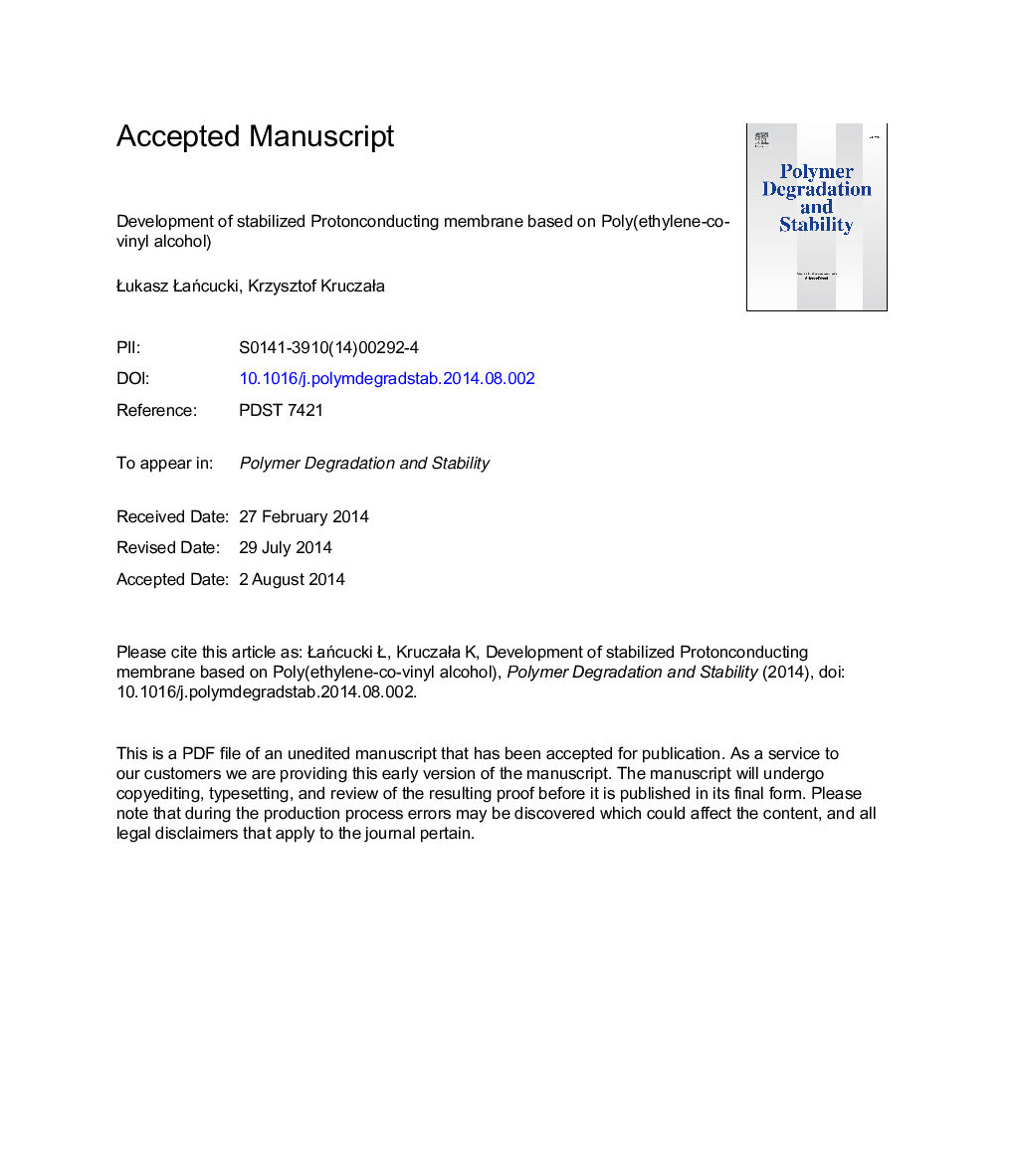| Article ID | Journal | Published Year | Pages | File Type |
|---|---|---|---|---|
| 5201743 | Polymer Degradation and Stability | 2014 | 28 Pages |
Abstract
This research was focused on the efficiency of transition metal ions (TMI) as hydroxyl radical scavengers in conditions that mimic the fuel cell operating environment. The stabilized hydrocarbon proton conductive polymer membranes (PEMs) were obtained via sulfopropylation of poly(vinyl alcohol-co-ethylene) with ethylene content of 44Â mol % (PEVA) followed by cross-linking of polymer chains with glutar aldehyde. Synthetized membranes were characterized by FTIR, elementary and thermogravimetric analysis. Examination of synthetized membranes morphology was performed with SEM and AFM techniques. The protons of sulfonic groups were substituted by transition metal ions Ce(III), and Mn(II) with the neutralization varying from 2.5 up to 10Â mol %. The results of EPR measurements provided evidence of scavenging of HO radicals by Ce(III) and Mn(II), leading to a weakening of their attack on the polymer. The lowering of carbon centered radicals concentration led to slower polymer degradation thus the presence of the cerium (III) and manganese (II) ions is expected to extend the membrane lifetime in FC operation conditions.
Related Topics
Physical Sciences and Engineering
Chemistry
Organic Chemistry
Authors
Åukasz ÅaÅcucki, Krzysztof KruczaÅa,
